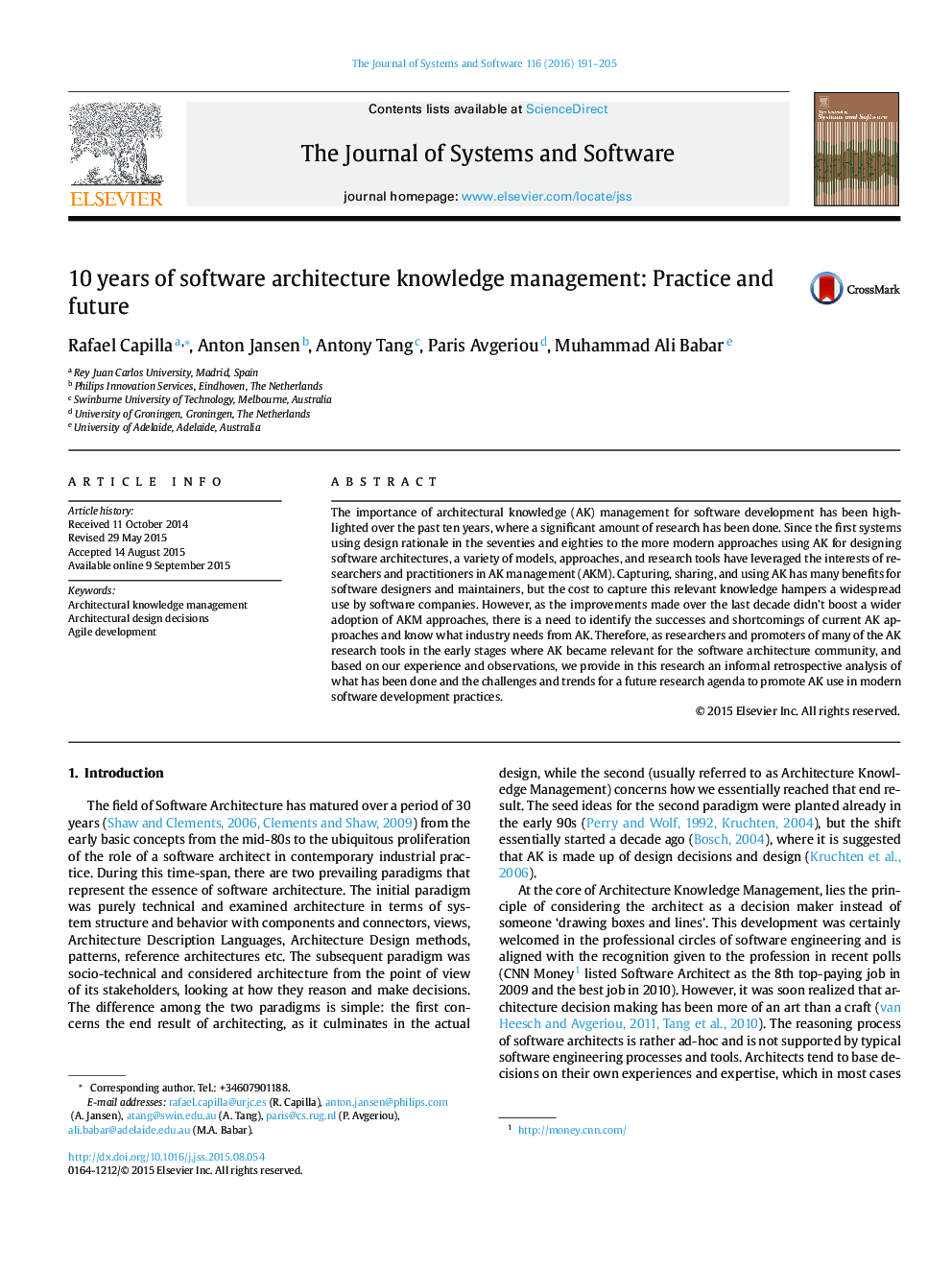| Article ID | Journal | Published Year | Pages | File Type |
|---|---|---|---|---|
| 461508 | Journal of Systems and Software | 2016 | 15 Pages |
•A retrospective analysis of state of the art of AKM.•AKM practice from models to tools around three different generations.•Our results of AK practice in industry, barriers and remedies.•Use of AK in different software development contexts.•A comparison of extended capabilities of AKM tools.
The importance of architectural knowledge (AK) management for software development has been highlighted over the past ten years, where a significant amount of research has been done. Since the first systems using design rationale in the seventies and eighties to the more modern approaches using AK for designing software architectures, a variety of models, approaches, and research tools have leveraged the interests of researchers and practitioners in AK management (AKM). Capturing, sharing, and using AK has many benefits for software designers and maintainers, but the cost to capture this relevant knowledge hampers a widespread use by software companies. However, as the improvements made over the last decade didn't boost a wider adoption of AKM approaches, there is a need to identify the successes and shortcomings of current AK approaches and know what industry needs from AK. Therefore, as researchers and promoters of many of the AK research tools in the early stages where AK became relevant for the software architecture community, and based on our experience and observations, we provide in this research an informal retrospective analysis of what has been done and the challenges and trends for a future research agenda to promote AK use in modern software development practices.
